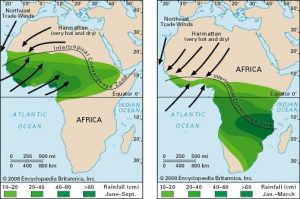THE GEOGRAPHY
1. INDIA TO ACQUIRE LITHIUM, COBALT MINES IN SOUTH AMERICA, AUSTRALIA
THE CONTEXT: The Mines Ministry has created a joint venture (JV) company — Khanij Bidesh India (KABIL) — with participating interest from National Aluminium Company (NALCO), Hindustan Copper (HCL) and Mineral Exploration Corporation (MECL).
THE EXPLANATION:
- India is working on acquiring mines of strategic minerals such as lithium and cobalt in producing countries like Australia, Argentina, Bolivia and Chile. The government’s move is aimed at ensuring a committed supply of raw materials especially for renewable energy (RE) and e-mobility sectors.
- To ensure India’s mineral security as well as to attain self-reliance in the area of critical and strategic minerals, KABIL is mandated to identify and acquire overseas mineral assets of critical and strategic nature such as Lithium, Cobalt etc.
- This initiative, aimed at giving further fillip to Atmanirbhar Bharat, will cater to the requirements of crucial sectors such as e-mobility, renewable energy, medicine, aerospace, aviation among others.
- In the country, the Atomic Minerals Directorate (AMD) conducted preliminary surveys on the surface and limited subsurface exploration, which revealed the presence of Lithium resources of 1,600 tonnes (inferred category) in the pegmatites of Marlagalla–Allapatna area in Mandya district of Karnataka.
- Presently, there is no production of cobalt in the country from primary cobalt resources. The demand for cobalt is usually met through imports. The refining capacity of cobalt in India is estimated at about 2,060 tonnes per year.


Importance of Cobalt and Lithium:
- Cobalt is key for boosting energy density and battery life because it keeps the layered structure stable as lithium ions get reversibly stuffed into and extracted from the cathode during battery operation.
- Lithium has the lowest density of all metals. It reacts vigorously with water.
THE INDIAN ECONOMY
2. NBBL UNVEILS UPMS TO SIMPLIFY BILL PAYMENTS
THE CONTEXT: NPCI Bharat BillPay (NBBL), the wholly-owned subsidiary of National Payments Corporation of India (NPCI), has introduced the ‘Unified Presentment Management System’ (UPMS) to simplify bill payments in the country.
THE EXPLANATION:
- According to NPCI, the UPMS provides a great opportunity for the service providers and fintechs of the digital payments ecosystem to run through this innovative feature in the sandbox environment of BBPS. Several Operating Units (OUs) and Technical Service Providers (TSPs) are actively coming forward in the rapid deployment of UPMS.
UNIFIED PRESENTMENT MANAGEMENT SYSTEM (UPMS)
- UPMS will help the customers to set up standing instructions, for any mode and from any channel on their recurring bill payments.
- Bills will be fetched automatically from the billers and will be presented to customers for their action, in terms of bill payment and auto-debit management.
- With the launch of UPMS, the motive is to enable all the Bharat BillPay Operating Units (BBPOU) to extend the facility for their customers or corporate clients with minimal effort by means of centralized infrastructure as well as application support provided by Bharat BillPay Central Unit (BBPCU).
- UPMS will also help in democratizing recurring bill payments and making them convenient for customers.
- It provides a great opportunity for fintech and service providers of the digital payments ecosystem for running through this innovative feature in the sandbox environment of BBPS.
- UPMS will enable a common repository of bills. It will ensure that the entire bill payment ecosystem gets updated in real-time.
DEPLOYMENT OF UPMS
- Technical Service Providers (TSPs) and Several Operating Units (OUs) are actively helping in the rapid deployment of UPMS. Ecosystem partners like IDFC FIRST Bank and Axis Bank are amongst Private Banks and PhonePe are actively engaged in taking UPMS services for their Billers and Consumers.
SIGNIFICANCE OF UPMS
- UPMS service assumes criticality with undergoing category expansion, as a majority of the transactions in new categories under BBPS such as mutual fund, subscriptions, insurance, school fee payments, presently happen through presentment and standing instructions.
ABOUT NPCI
- The National Payments Corporation of India (NPCI) is an initiative taken by the Reserve Bank of India (RBI) and the Indian Bank’s Association (IBA) to operate the retail payments and settlement systems in India. This organization was founded in the year 2008 under the Payment and Settlement Systems Act, 2007. NPCI has been incorporated as a ‘not for profit company under section 8 of the Companies Act 2013.
PRODUCTS OF NPCI
- RuPay
- National Common Mobility Card
- Bharat Interface for Money (BHIM)
- Unified Payments Interface (UPI)
- Bharat Bill Payment System
THE ENVIRONMENT ECOLOGY AND CLIMATE CHANGE
3. THE LARGEST WINTERING GROUND OF THE INDIAN SUBCONTINENT
THE CONTEXT: Chilika Lake, the largest brackish water lake and wintering ground of the birds in the Indian subcontinent saw a million birds, including uncommon Mongolian gull, visiting the waterbody.
THE EXPLANATION:
- Chilika lake hosts birds migrating from thousands of miles away from the Caspian Sea, Lake Baikal, Aral Sea, remote parts of Russia, Kirghiz steppes of Mongolia, Central and Southeast Asia, Ladakh and the Himalayas. The winged guests find the vast mud-field and abundant fish stock here suitable to congregate.
- As per the waterbird status survey-2022 conducted in the Chilika, a total of 10,74,173 birds of the 107 waterbird species and 37,953 individuals of 76 wetland-dependent species were counted at the entire lagoon. In the year 2021, the count in Chilika was over 12 lakh. Bird census members reported rare sightings of the uncommon Mongolian gull.
- The census was undertaken jointly by the Odisha State Wildlife Organisation, the Chilika Development Authority (CDA) and the Bombay Natural History Society. The Chilika Lagoon was divided strategically into 21 segments for the census.
- A total of 3,58,889 birds (97 species) were counted in the Nalabana Bird Sanctuary inside Chilika – a decrease of 65,899 from the year 2021. The decrease is attributed to high water levels and the presence of water in cultivated fields in adjoining areas.
- “Among the three pintail species of ducks, the northern pintail (1,72,285), gadwall (1,53,985), Eurasian wigeon (1,50,843) accounted for over one lakh in this year’s count,” says the report. However, the population of gadwall and Eurasian wigeon was less than that of the year 2021.
- There was a marginal decrease in the number of species such as the northern shoveler, tufted duck and red-crested pochard. An increase in the population of northern pintail, common coot and common pochard was noticed.
- “The increase in numbers for the greater flamingo at Nalabana mudflat indicates that the restoration at Nalabana is effective. This year’s greater flamingo count was the highest in the last one decade. It is largely due to appropriate management of mudflats”. Overall, the local resident species such as purple swamp-hen, purple heron, Indian moorhen, and jacanas were found in higher numbers.
VALUE ADDITION:
SIGNIFICANCE OF CHILIKA LAKE:
- After the New Caledonian barrier reef, it is Asia’s largest and world’s second-largest brackish water lagoon.
- A lagoon is a shallow body of water that is isolated from a larger body of water by a narrow landform like reefs, barrier islands, barrier peninsulas, or isthmuses.
- It has been designated as a Ramsar Site and a possible UNESCO World Heritage Site.
- Chilika Lake was declared as the first Ramsar Convention wetland of international importance in India in 1981.
- Satapada Island, Irrawaddy dolphins are frequently seen.
- In 1987, Nalabana Island (Forest of Reeds), a 16-square-kilometer island in the lagoon, was designated as a bird sanctuary.
- It covers an area of nearly 1,100 km2 and is located at the mouth of the Daya River, which flows into the Bay of Bengal.

ABOUT BNHS:
- The Bombay Natural History Society (BNHS), founded on 15 September 1883, is one of the largest non-governmental organisations in India engaged in conservation and biodiversity research
- BNHS is the partner of Birdlife International in India, it has been designated “Scientific and Industrial Research Organization” by the Department of Science and Technology.
4. INCREASE IN RAINFALL IN NORTH AND CENTRAL AFRICA: STUDY
THE CONTEXT: Rainfall trend analysis of Africa published in the journal Remote Sensing showed a significant increase in annual rainfall at the national level from 1983 to 2020 in almost all regions of the continent, except those in the south and the east.
THE EXPLANATION:
- Country-level annual rainfall variability indicated that after 2000, the annual rainfall in most of the countries in the Central African region exceeded 1,700 mm. However, Algeria, Tunisia, Mali, Niger and Western Sahara in the Northern and Eastern African regions showed an apparent increase in annual average rainfall from 1983 to 2020.
- The highest annual rainfall trends were recorded in Rwanda (11.97 millimeters per year), the Gulf of Guinea (river basin 8.71 mm/year), the tropical rainforest climate zone (8.21 mm/year) and the Central African region (6.84 mm/year).
- The lowest annual rainfall trends were recorded in Mozambique (−0.437 mm/year), the subtropical northern desert (0.80 mm/year), the west coast river basin of South Africa (−0.360 mm/year) and the Northern Africa region (1.07 mm/year).
- In the tropical northern desert climates, tropical northern peninsulas and tropical grasslands, there was a significant increase in rainfall over the entire timeframe of the month, season and year.
- Climate variability directly impacts agriculture and poses a significant threat to food security and livelihoods, especially in poor or developing countries.
- A slight variation in climatic conditions can subject a large number of the rural poor to increased poverty and misery as their ability to earn their livelihoods is compromised.
- Adverse impacts of climate variability and change are making it difficult for the poor rural populations to continue engaging in meaningful agriculture and obtain secure livelihoods. This is because agricultural productivity is highly dependent on rainfall.
BACKGROUND:
- Africa receives rainfall over two major monsoons — the west African monsoon and East African monsoon. The Intergovernmental Panel on Climate Change Atlas introduced four other rainfall seasons, March-April-May, June-July-August, September-October-November, and December-January-February to study and compare the climate variability across geographies.
- Rainfall in Africa is sensitive to large-scale climatic variables such as El Niño-Southern Oscillation, La Niña-Southern Oscillation, Indian Ocean Depot and Intertropical Convergence Zone.

THE INTERNAL SECURITY AFFAIRS
5. INTELLIGENCE BUREAU’S COUNTER-TERRORISM GRID: MAC
THE CONTEXT: The Centre wants the States to share more intelligence inputs through the Multi-Agency Centre (MAC), a common counter-terrorism grid under the Intelligence Bureau (IB) that was made operational in 2001 post-Kargil war.
THE EXPLANATION:
- Union Home Ministry asked the Director’s General of Police to share adequate information and actionable inputs through the MAC.
- As many as 28 organizations, including the Research and Analysis Wing (R&AW), armed forces and State police are part of the platform and various security agencies share real-time intelligence inputs on the MAC. Plans are afoot for more than a decade to link the system up to the district level.
- According to the Home Ministry, though the system existed to share information among various agencies, it was not being implemented effectively. “States are often reluctant to share information on the platform.
- There are around 400 secured sites connected with the MAC headquarters. The reluctance on the part of the States was also stated in a parliamentary standing committee report in 2020.
- The committee had observed that the contribution made over the years by State agencies is lower in the overall inputs that had been received at the MAC. The IB had informed the committee that all organizations that are in any way involved in the counter-terrorism effort is a member of this center. All the States have a subsidiary multi-agency center (SMAC) located in all State capitals. The IB informed the panel that the Ministry of Home Affairs (MHA), along with the IB, was contemplating extending the connectivity of SMAC to the districts.
WHAT IS THE NEED?
According to the Home Ministry, “It is highlighting the continued threats of terrorism and global terror groups, terror financing, narco-terrorism, organized crime-terror nexus, illicit use of cyberspace, movement of foreign terrorist fighters, it also stressed upon the need for better coordination and synergy among the central and state security agencies in countering the ever-changing counter-terrorism and security challenges.
ABOUT THE CENTRE
- MAC was formed in December 2001 following the Kargil intrusion and the subsequent overhaul of the Indian national security apparatus suggested by the Kargil Review Committee report and GoM report.
- Accordingly, the Intelligence Bureau (IB) was authorized to create a multi-agency center (MAC) in New Delhi.
- Now functioning 24/7 as the nodal body for sharing intelligence inputs, MAC coordinates with representatives from numerous agencies, different ministries, both central and state.
- As noted in a 2016 parliamentary report the major contributors of intelligence inputs to the MAC were the Defence Intelligence Agency (DIA) and the Research and Analysis Wing (R&AW).
THE PRELIMS PRACTICE QUESTION
Q1. Which one of the following ancient towns is well-known for its elaborate system of water harvesting and management by building a series of dams and channelizing water into connected reservoirs?
- Dholavira
- Kalibangan
- Rakhigarhi
- Ropar
ANSWER FOR 04TH JANUARY 2022
ANSWER: C
Spread the Word



